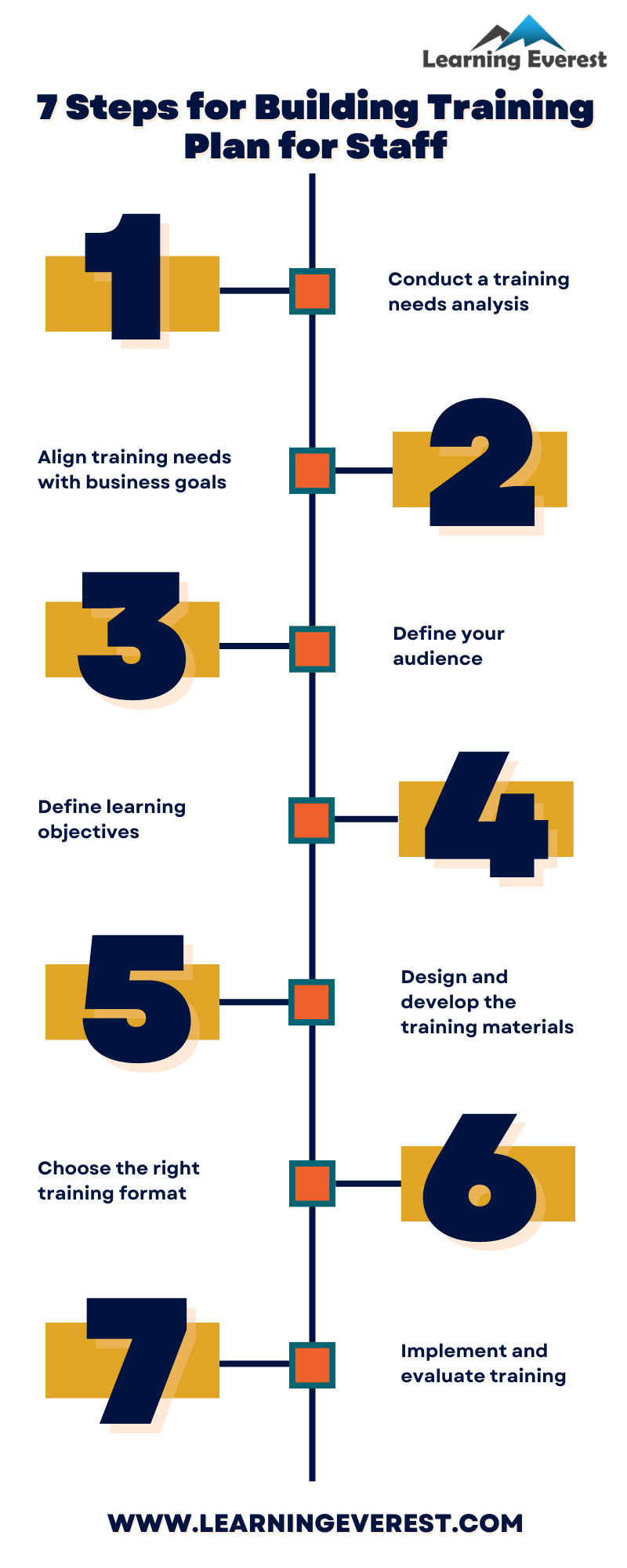A training plan for your staff is an essential blueprint for guiding your employee training endeavors. A training plan structures your organization’s training process in an effective and meaningful way, and can greatly improve the quality of training you offer to your employees. Impactful training, in turn, improves employee productivity and retention, building a skilled workforce for the long haul. This article will walk you through 7 steps for building an effective training plan for staff so you can elevate your training programs.
Table of Contents
A training plan for your staff is an essential blueprint for guiding your employee training endeavors. A training plan structures your organization’s training process in an effective and meaningful way, and can greatly improve the quality of training you offer to your employees. Impactful training, in turn, improves employee productivity and retention, building a skilled workforce for the long haul. This article will walk you through 7 steps for building an effective training plan for staff so you can elevate your training programs.
What is a Training Plan for Staff?
A training plan is a document that lays down the steps, objectives, curriculum, schedule, resources, etc. for a staff training program. It’s an outline of all the key elements of a training program, making it easier for the business to build well-aligned training programs that effectively meet training requirements.
Elements of a Training Plan for Staff
A training plan for staff can include multiple elements, some of which tend to be common across plans, while others can vary. Here is a non-exhaustive list of what might be included in a training plan:
- Learning objectives
- Learning outcomes
- Training strategies and techniques
- Assessment strategies
- A list of trainers, instructors, mentors, etc.
- A schedule for the training program
- Knowledge and skills acquired
- Resources to be used
- Course curriculum
Types of Staff Training Plans
Staff training plans are built for many different reasons, depending on your training needs and business objectives. They can be divided into three categories:
1. New Hire Training Plan
A new hire training plan is meant to teach new employees about their job tasks, aiming to build knowledge and skills relevant to their job.
2. Employee Development Plan
An employee development plan helps employees work towards their desired career path by preparing them for more advanced job tasks and roles. Such plans lead to transfers and promotions while also being aligned with organizational goals.
3. Safety Training Plan
Safety training plans are meant to ensure employees’ and the organization’s safety. They can cover topics related to physical safety, cyber security, and compliance training.
Steps for Building a Training Plan for Staff
Now that you have a fair idea of what a training plan for staff is, let us look at the steps for building one.
Step 1: Conduct a Training Needs Analysis
The first step for building a training plan for staff is to conduct a training needs analysis to identify knowledge and skills gaps in your organization.
Step 2: Align Training Needs With Business Goals
Once you have identified your organization’s training needs, see how they relate to business goals so that the training plan benefits both, employees and the organization. At the same time, set some Key Performance Indicators (KPIs) so you have a metric to track whether the training plan is having a positive impact on the organization or not.
Step 3: Define Your Audience
After determining learning needs and KPIs, you will have an idea about which departments/employees need training. Use this information to clearly define your audience. This will include their job profile, their level of expertise, whether they are remote or in-office, etc. Defining your audience will let you pick the right training approach for your training plan, ensuring that the learning is as effective as possible.
Step 4: Define Learning Objectives
After determining training needs and your audience, you can define the learning objectives of your training program. Make sure to make learning objectives precise and sufficiently detailed as they will guide how you develop the rest of the training program. Well-defined learning objectives will lead to effective and well-aligned learning outcomes, whereas poorly-defined learning objectives will lead to a waste of your training budget.
Step 5: Design and Develop the Training Materials
The next step for developing a training plan for staff is to design and develop the training materials. Ensure that the training materials fulfil the learning requirements set by the learning objectives so there is alignment between the two. Training assessments will also be a part of developing training materials, and must test crucial knowledge and skills for performing the target behaviors and job tasks.
Step 6: Choose the Right Training Format
Once you have the training materials, you need to pick the right training format for your training plan for staff. This depends on various factors, from your target audience to your training budget and resources. You can pick from many different training formats, such as eLearning, webinars, workshops, instructor-led training, mentoring, conferences, job shadowing, etc. You can also use a mix of training strategies if time and budget allow.
Step 7: Implement and Evaluate Training
After the training program has been developed in the intended format, you can begin rolling it out. At the same time, you can start evaluating reception and training effectiveness to see what’s working and what needs to be improved.
Infographic
Knowledge Check!
Frequently Asked Questions (FAQs)
What is included in a training plan?
A training plan includes all the key elements of a training program such as learning objectives, resources, schedule, course curriculum, etc.
What are the 7 steps to creating a successful training plan?
The 7 steps for building a training plan are:
- Conduct a training needs analysis
- Align training needs and business objectives
- Define your audience
- Define learning objectives
- Design and develop training materials
- Choose the right training format
- Implement and evaluate training






